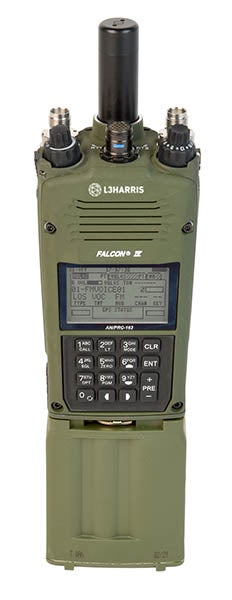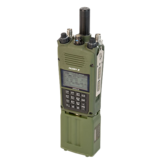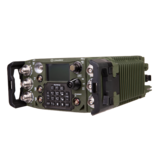Behind the scenes of the lightning-fast pace within the modern battlespace is a technology transformation moving at hyper speed: quantum computing.
When encryption technology can harness the laws of quantum mechanics to solve complex problems classical computers cannot, communications network security must be able to assess and determine how to stay ahead of potential threats. Cryptography modernization is the foundational capability to protect tactical networks and all of the information and devices within them.
As a world leader in high-assurance tactical radio design and development for more than 60 years, L3Harris Technologies is blazing the trail toward modernizing cryptography solutions while maintaining performance for challenges today and into the future, according to Brian Wenink, L3Harris Product Management Director.
“L3Harris collaboratively defines and implements a holistic plan for customers to achieve their mission,” said Wenink. “We are well versed in supplying the systems, training and support needed, from key management solutions, cryptographic algorithms, software-defined supporting systems and waveforms – based on decades of experience and success in the field.”
The company collaborates with the National Security Agency and the National Institute of Standards and Technology to lead the implementation and advancement of cryptographic algorithms that are resilient against emerging threats, added Wenink.
Easing the User Burden
From a tangible device perspective, L3Harris’ expertise in tactical communications devices and systems has lent itself to innovations that add versatility and adaptability to end-users’ ease of use, including multichannel radios with embedded crypto and scalability from low-power, small-sized platforms to high-speed, high-data-rate systems, according to Chris Pugh, L3Harris Product Management Lead.
“Our software-defined crypto engines make remotely updating devices to the latest standards much easier – and your data is protected through the radio itself,” said Pugh. “As technology advancement continues to accelerate, versatility and upgradeability will be extremely key to stay ahead of threats. We’re ready to meet the high-assurance needs of our customers regardless of where things go in the future.”
A Legacy of Support
The company has continually invested internal research and development to remain ahead of the cryptography modernization curve and to stay compliant with new standards, added Pugh.
According to Wenink, cryptography modernization is a continual process, and L3Harris has led the pack in innovation.
Some groundbreaking industry firsts include embedding crypto engines in tactical radios since the Falcon® II line in 1996 and merging a software-defined radio with a crypto engine of its own design, according to Wenink.
“We have more flexibility and released more products in this area than anybody else in the market,” said Wenink. “Back in the 1980s, users would carry around both a radio and an encryptor, so the original purpose of merging the two was size, weight and power. Merging the two together lightened the burden for the warfighter.”

Adding Flexibility to Cryptography
When the company moved to the Denali® security architecture in 2013, L3Harris introduced its first software-defined encryption engine for a tactical radio that allows both high-assurance and Sensitive But Unclassified encryption, expanding the applicable mission sets for such devices.
Since that time, four radios – the AN/PRC-159 in 2013, the AN/PRC-163 in 2018, the AN/PRC-167 in 2019 and the AN/PRC-165 in 2021– have been NSA-certified with Denali’s Cryptographic Subsystem technology.
The software-defined Denali architecture also avoids the complexity of replacing Application-Specific Integrated Circuits (ASICs), speeding joint force security patch updates – and extending the longevity of the host platforms, according to Wenink. This approach also mitigates supply chain-constraint concerns, as the designs allow L3Harris to pivot when necessary to provide more opportunities for scalability.
“Basing our subsystems on Denali offers the ultimate in flexibility and scalability when it comes to addressing quickly evolving cryptography modernization and is a critical advantage over systems requiring hardware replacement,” said Wenink. “With only software changes required, host platforms are able to be sustained longer and maintain more capability throughout their life cycle.”
Without robust, updated cryptography encryption, tactical communications networks, connected assets and the warfighters themselves are at risk to enemy attack. It is imperative defense organizations partner with trusted, proven industry partners that can adapt and develop technology that protects national security assets for today’s and tomorrow’s threats.
Learn more about L3Harris’ cryptography modernization solutions



